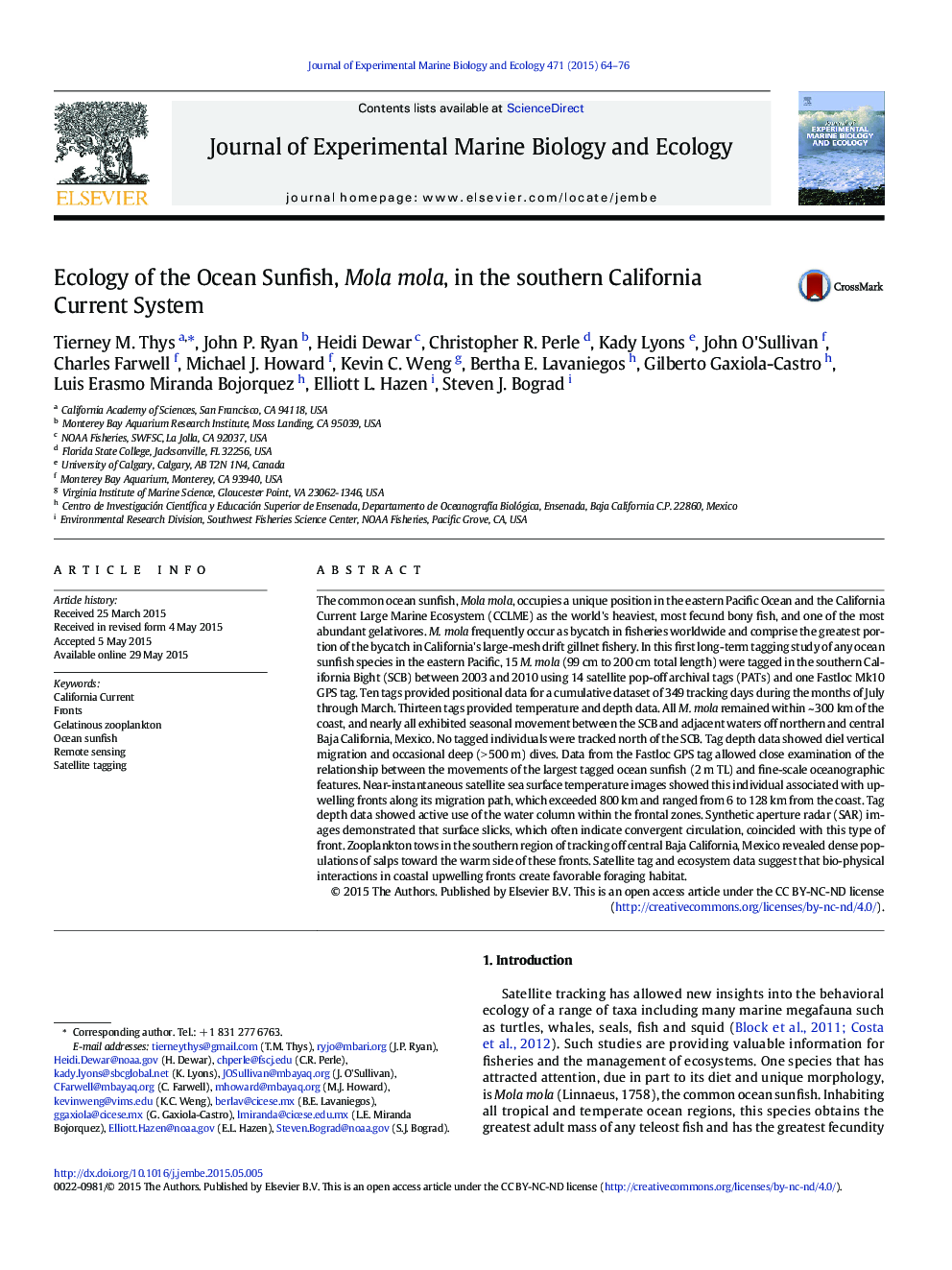| Article ID | Journal | Published Year | Pages | File Type |
|---|---|---|---|---|
| 6303852 | Journal of Experimental Marine Biology and Ecology | 2015 | 13 Pages |
Abstract
The common ocean sunfish, Mola mola, occupies a unique position in the eastern Pacific Ocean and the California Current Large Marine Ecosystem (CCLME) as the world's heaviest, most fecund bony fish, and one of the most abundant gelativores. M. mola frequently occur as bycatch in fisheries worldwide and comprise the greatest portion of the bycatch in California's large-mesh drift gillnet fishery. In this first long-term tagging study of any ocean sunfish species in the eastern Pacific, 15 M. mola (99Â cm to 200Â cm total length) were tagged in the southern California Bight (SCB) between 2003 and 2010 using 14 satellite pop-off archival tags (PATs) and one Fastloc Mk10 GPS tag. Ten tags provided positional data for a cumulative dataset of 349 tracking days during the months of July through March. Thirteen tags provided temperature and depth data. All M. mola remained within ~Â 300Â km of the coast, and nearly all exhibited seasonal movement between the SCB and adjacent waters off northern and central Baja California, Mexico. No tagged individuals were tracked north of the SCB. Tag depth data showed diel vertical migration and occasional deep (>Â 500Â m) dives. Data from the Fastloc GPS tag allowed close examination of the relationship between the movements of the largest tagged ocean sunfish (2Â m TL) and fine-scale oceanographic features. Near-instantaneous satellite sea surface temperature images showed this individual associated with upwelling fronts along its migration path, which exceeded 800Â km and ranged from 6 to 128Â km from the coast. Tag depth data showed active use of the water column within the frontal zones. Synthetic aperture radar (SAR) images demonstrated that surface slicks, which often indicate convergent circulation, coincided with this type of front. Zooplankton tows in the southern region of tracking off central Baja California, Mexico revealed dense populations of salps toward the warm side of these fronts. Satellite tag and ecosystem data suggest that bio-physical interactions in coastal upwelling fronts create favorable foraging habitat.
Related Topics
Life Sciences
Agricultural and Biological Sciences
Aquatic Science
Authors
Tierney M. Thys, John P. Ryan, Heidi Dewar, Christopher R. Perle, Kady Lyons, John O'Sullivan, Charles Farwell, Michael J. Howard, Kevin C. Weng, Bertha E. Lavaniegos, Gilberto Gaxiola-Castro, Luis Erasmo Miranda Bojorquez, Elliott L. Hazen,
